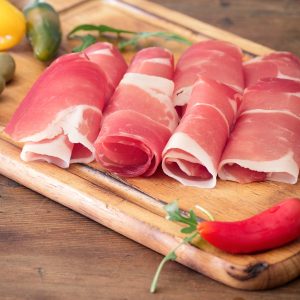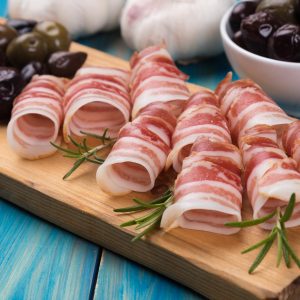Let’s Add a Little Spice to Your Life
What Are Spices?
Spices are aromatic, flavorful substances that are derived from the bark, roots, seeds, or fruit of plants. They are used to add flavor and aroma to food and have been a part of the human diet for thousands of years.
There are many different types of spices, including herbs, seeds, roots, and bark. Some common examples of spices include pepper, cinnamon, nutmeg, cloves, ginger, and paprika. Spices are often used in combination with each other to create unique flavor profiles and are an important part of many cuisines around the world.
Spices are used in sweet and savory dishes and can be used in various forms, including whole, ground, or dried. They are typically added to food during cooking but can also be used as a garnish or to flavor drinks such as tea or cocktails.
Spices are believed to have several health benefits and have been used in traditional medicine for centuries. Some spices are thought to have antioxidant properties and may help to reduce inflammation and improve digestion. However, it is important to use spices in moderation, as they can be powerful and may have negative side effects if consumed in large amounts.
The trade-in of spices has a long history and has played a significant role in the economic and cultural exchange between different regions of the world. Spices have been highly prized for their flavor and medicinal properties and have been the subject of wars, exploration, and trade throughout history. Today, spices are widely available and an important part of many people’s diets worldwide.
You will notice in the lists below that some items are listed as both spices and herbs.
Here is a list of spices that go well with various types of food:
- Beef: black pepper, paprika, cumin, garlic, thyme
- Chicken: paprika, garlic, oregano, thyme, cumin
- Pork: paprika, garlic, cumin, mustard seeds, coriander
- Fish: lemon pepper, dill, cumin, paprika, cayenne pepper
- Vegetables: basil, oregano, thyme, cumin, coriander
- Legumes: cumin, coriander, paprika, chili powder, turmeric
- Rice: cumin, turmeric, coriander, paprika, garam masala
- Soups and stews: bay leaves, thyme, rosemary, basil, cumin
- Baked goods: cinnamon, nutmeg, ginger, allspice, cloves
This is just a small selection of the many spices that can be used to enhance the flavor of different foods. The best spices to use will depend on your personal taste and the specific dish that you are making. Experimenting with different combinations of spices can help you discover new flavor profiles and create unique dishes.

Herbs are plants valued for their flavorful leaves, seeds, or flowers. They are also valued for their medicinal or aromatic properties and have been used in cooking and traditional medicine for thousands of years.
There are many different types of herbs, and they are used in a variety of cuisines around the world. Some common examples of herbs include basil, cilantro, parsley, mint, and rosemary.
Herbs are typically used fresh, although they can also be dried or frozen for later use. They are often added to food at the end of the cooking process to preserve their flavor and aroma. However, some herbs, such as oregano and thyme, can withstand longer cooking times and can be added to dishes at the beginning of the cooking process.
In addition to their use in cooking, herbs are also used for their medicinal properties. Many herbs have been used for centuries to treat various ailments and are believed to have antioxidant, anti-inflammatory, and other health-promoting properties. Some herbs are also used in natural remedies and homeopathic treatments.
Herbs are easy to grow and can be grown in various settings, including gardens, pots, and containers. They can also be purchased fresh or dried at grocery stores and specialty markets.
Here is a list of herbs that go well with various types of food:
- Beef: rosemary, thyme, parsley, oregano, tarragon
- Chicken: basil, oregano, thyme, rosemary, parsley
- Pork: rosemary, thyme, sage, marjoram, basil
- Fish: dill, parsley, tarragon, basil, chives
- Vegetables: basil, parsley, chives, oregano, thyme
- Legumes: basil, oregano, thyme, cilantro, parsley
- Rice: basil, cilantro, parsley, mint, dill
- Soups and stews: thyme, basil, rosemary, oregano, parsley
- Baked goods: rosemary, thyme, basil, oregano, lavender
This is just a small selection of the many herbs that can be used to enhance the flavor of different foods. The best herbs will depend on your taste and the specific dish you are making. Experimenting with different combinations of herbs can help you discover new flavor profiles and create unique dishes.
Yes, some spices are considered herbs.
An herb is a plant valued for its medicinal or aromatic properties and used in cooking or traditional medicine. The term “herb” is often used to refer to the leaves of a plant, although it can also refer to seeds or flowers.
Spices, conversely, are aromatic, flavorful substances derived from the bark, roots, seeds, or fruit of plants. They are used to add flavor and aroma to food and have been a part of the human diet for thousands of years.
Some plants can be classified as both herbs and spices, depending on the part of the plant that is used. For example, the basil plant leaves can be used as an herb, while the seeds of the same plant can be used as a spice. Similarly, the leaves of the bay tree can be used as an herb, while the bark of the same tree can be used as a spice.
In conclusion, some spices are considered herbs because they are derived from plants’ leaves, seeds, or flowers, and are used for their aromatic and flavorful properties. Other spices are derived from other parts of the plant, such as the bark, roots, or fruit, and are used for their flavor and aroma.
Christopher Columbus is credited with introducing several important crops to the Old World, including pumpkins native to the Americas. However, he did not have a significant impact on the spice industry.
During the Age of Exploration, European traders and explorers sought new routes to the East Indies, where valuable spices such as pepper, cinnamon, and nutmeg were grown. The Catholic Monarchs of Spain sponsored Columbus, who traveled west to find a westward route.
However, he did not reach the East Indies and landed in the Caribbean, where he encountered a variety of new plants and animals unknown to Europeans.
While Columbus did not discover the spices he was seeking, he brought back other crops, such as tomatoes, potatoes, and peppers, which had a major impact on European cuisine and agriculture. He also brought back news of the rich resources of the New World, which led to further exploration and colonization by European powers.
He and other European explorers brought chilies, allspice, and vanilla back from the Americas. Chilies are a type of pepper that is native to the Americas, and they have been cultivated in Central and South America for thousands of years.
On their voyages to the New World, Columbus encountered chilies and brought them back to Europe, where they quickly became popular. Today, chilies are used in a variety of cuisines around the world.
Allspice is another spice that is native to the Americas. It is made from the dried fruit of the pimento tree, which is native to the Caribbean and Central America. Columbus brought allspice back to Europe, becoming a popular ingredient in various dishes.
Vanilla is derived from the pods of the vanilla orchid, which is native to Mexico and Central America. The Aztecs and other indigenous peoples of the Americas used vanilla to flavor their chocolate drinks. Columbus brought vanilla back to Europe, becoming a popular flavor in various foods and beverages.
















7 Responses
list of cooking spices
Excellent article just what I have been looking for a long time!!!!!!!!!
Thank you, lots of helpful info.
Good info!
Good info. This is what’s in our spice rack. What’s in yours?
When a recipe calls for mint, is it spearmint or peppermint?
Great question Judy and after doing a little research, I could write a long post just on your question. Mint (mentha) is the simple name for many different mint varieties including spearmint and peppermint. Although they are from the same family and have very similar properties when it comes to flavor and appearance, peppermint contains 40% menthol while spearmint contains less than 1% menthol. This means peppermint is going to have a more intense “minty” flavor that spearmint. So if you have a recipe that is looking for a strong minty flavor like candy or ice cream, peppermint is the way to go. If you are looking for a touch of mint flavor but don’t want to overwhelm the dish, think spearmint.